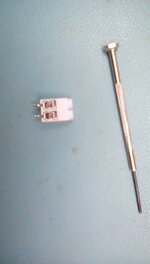T
treez
Guest
Hi,
Please help to locate this connectors part number. (pic attached)
It is extremely poor. It is not a rising clamp type....when you put a wire end into it, you cannot get it back out! It is killing me when i am doing testing!
I need to find its part number so i can compare its price with better rising clamp type connectors. Then i will beg for it to be replaced.
It is 5.08mm pitch
15A rated
300VAC rated
Please help to locate this connectors part number. (pic attached)
It is extremely poor. It is not a rising clamp type....when you put a wire end into it, you cannot get it back out! It is killing me when i am doing testing!
I need to find its part number so i can compare its price with better rising clamp type connectors. Then i will beg for it to be replaced.
It is 5.08mm pitch
15A rated
300VAC rated
